Set Review ➟ 42115 LEGO® Technic Lamborghini Sián: Driving in Style
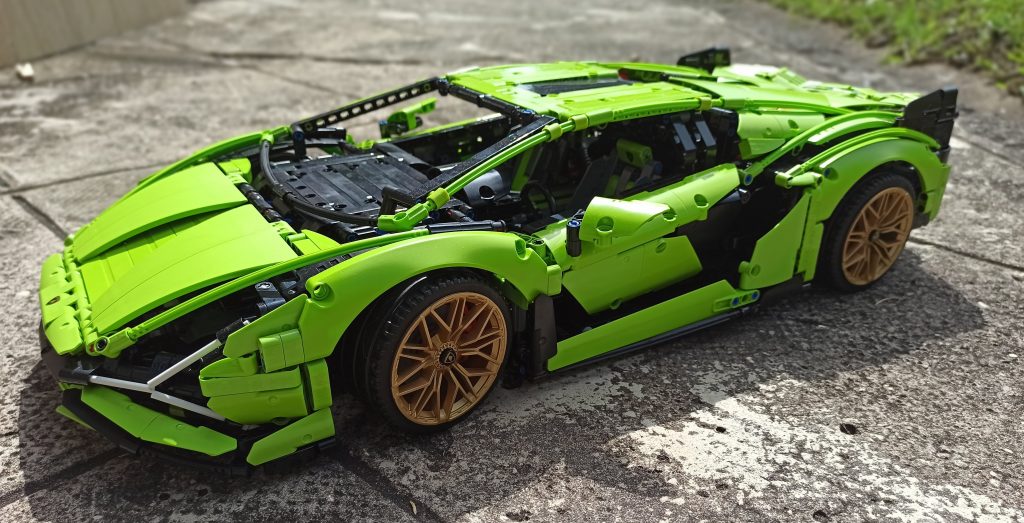
As a long-time LEGO Technic fan, I am always excited when a large new set is revealed. When LEGO introduced a new concept in the Technic theme back in 2016 with the introduction of the exclusive 40256 Porsche 911 GT3 RS, squarely aimed at the adult market. I wasn’t just excited about the set, but also about the new direction LEGO Technic was taking. Developing a set of this size takes a lot of time. And given the cost of these sets it is only natural that it took 2 years for the next set to appear.
LEGO has now taken another high-end sports car and created a 1:8 scale model of it, taking into account some of the feedback it received on the previous model from fans and users to make improvements to the product and experience.
This line of supercars was the first to use a special high-quality packaging and the Lamborghini Sián is no exception. The front of the box clearly shows the characteristic shape of the hood. A LEGO set without a set number or a LEGO logo on the front!! The lines on the hood are scored into the cardboard and combined with the colours it creates the optical illusion of depth.
The back of the box shows the full model and name, this time with the LEGO logo as well as piece count and set number.


On the inside of the lid there is an inscription (on both of the long sides) which reads “Questo è stato il momento in cui ho finalmente deciso di creare un’auto perfetta.” In English that would read “This was the moment when I finally decided to create a perfect car”. The quote is from Ferruccio Lamborghini, founder of the company. There is also a stylised number 63, in reference to the number of actual cars that will be made of this model, each in a different colour. An exclusive car indeed!

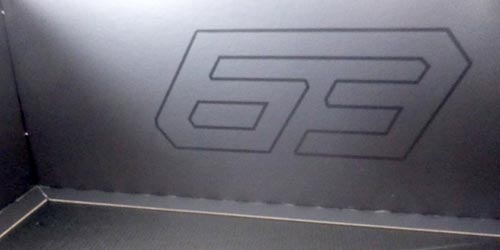
After removing the lid, we continue in style: there are six smaller boxes inside the box and together they make out the shape and colour of the rear of the car. Each of these boxes corresponds to a building stage in the process of assembling this model.
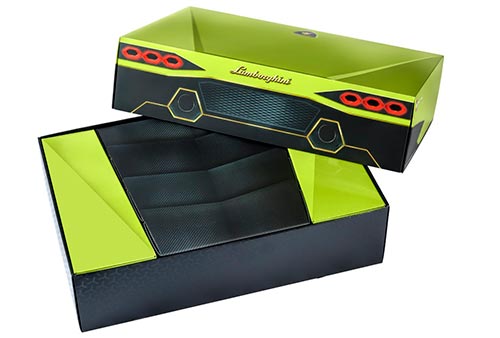
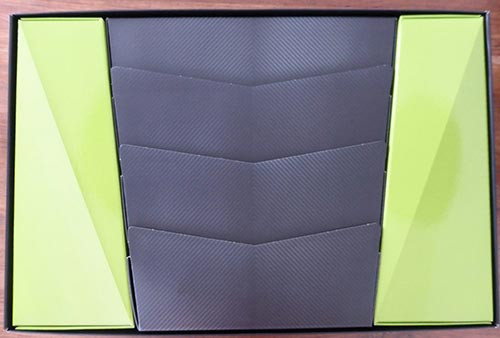
Underneath those there you find the building instructions, split up in two books that together show the complete model. The books come with introductions to each building stage in both German and English, as well as QR codes to the videos that accompany the set.
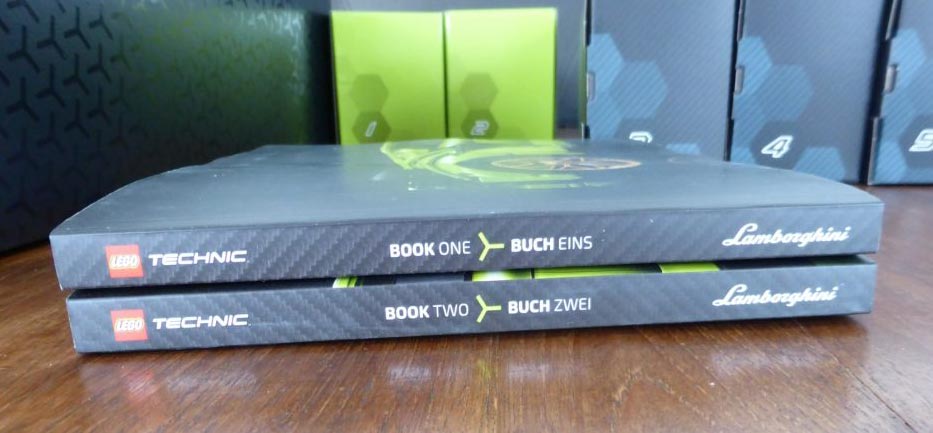
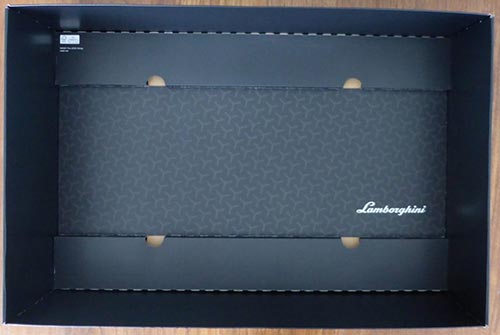
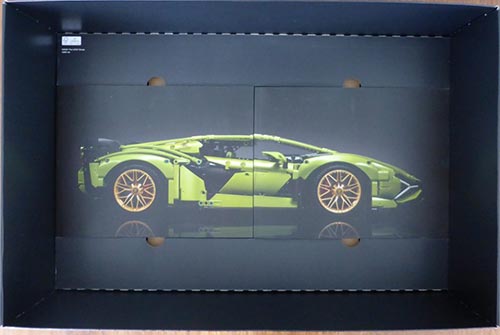
One of the improvements in this set, in comparison to the 42083 Bugatti Chiron is the placement of the suspension. 1:8 scale cars are heavy and in order to make sure the suspension performs well there are a few factors to take into account. One of them is the placement of the shock absorbers. Another one is the use of friction pins (blue) vs frictionless pins (tan) in different parts of the suspension. In this case the design is such that the Lamborghini Sian has good travel on both axes and doesn’t lock up.
Compare the front axles of the Bugatti with the Lamborgini:
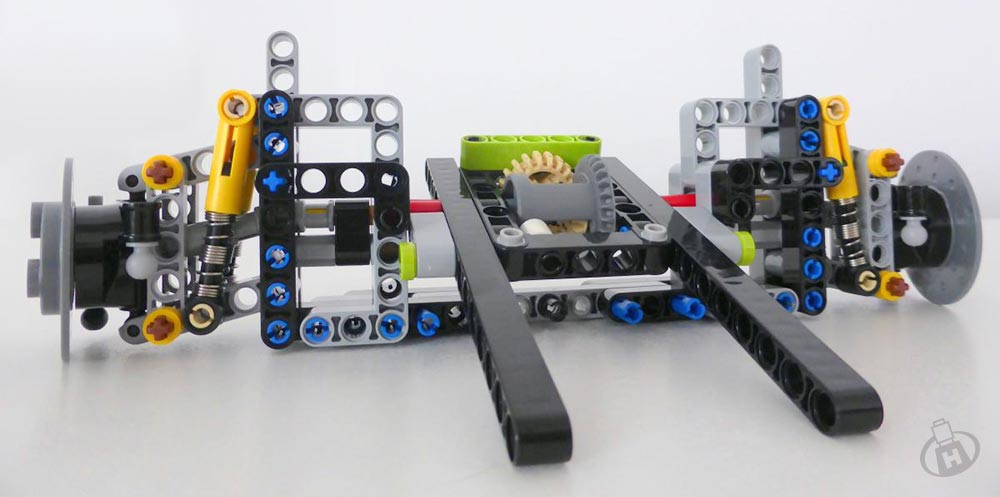
Bugatti Front Axle

Lamborghini Front Axle
And the rear axle:
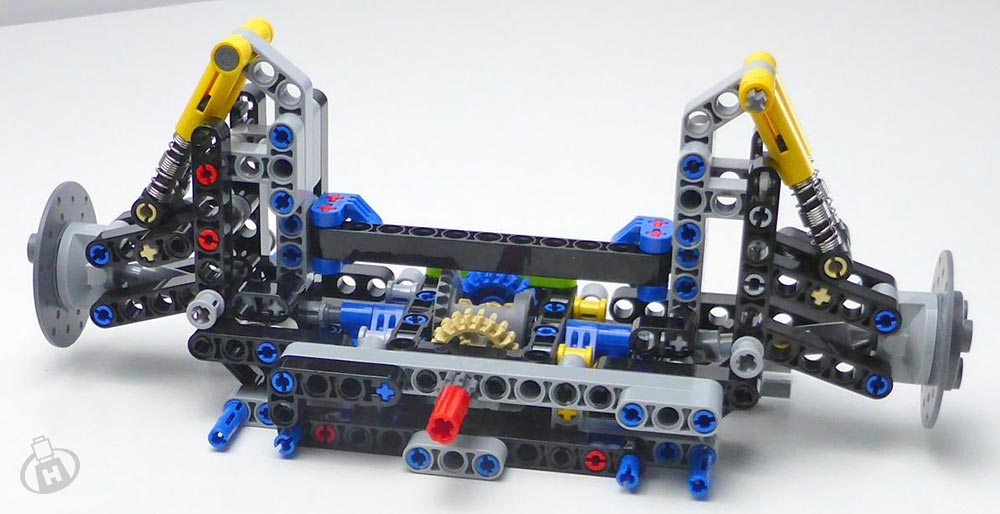
Bugatti rear Axle
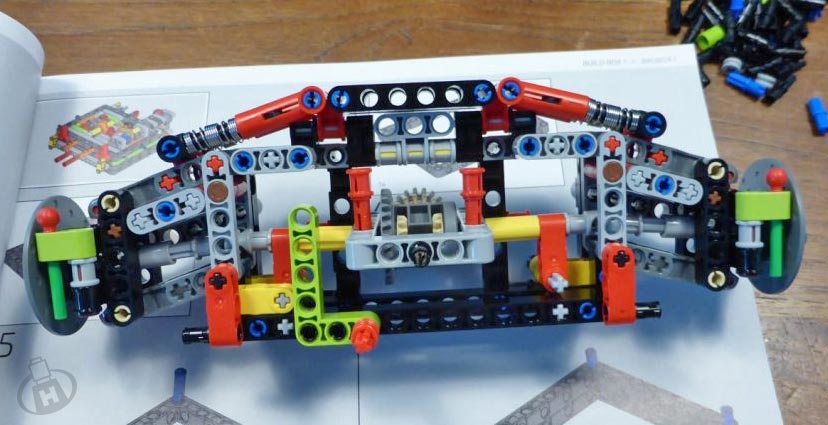
Lamborghini Rear Axle
Another improvement is this model is the “window” at the bottom of the model, showing off the gearbox. In the 40256 Porsche 911 GT3 RS it took a relatively simple modification to make it possible to separate the entire chassis from the rest of the model.
In the 42083 Bugatti Chiron the gearbox was improved, but completely hidden from view inside the model and due to the way the model is built it was impossible to separate chassis and bodywork. The 42115 Lamborghini Sián is built following a similar principle, and in order to overcome this obstacle and give Technic fans a glimpse of what is going on inside the model, the entire gearbox is built using the large new frames to provide a window into the model…through the bottom.
The gearbox is essentially the same as the one in the Bugatti…
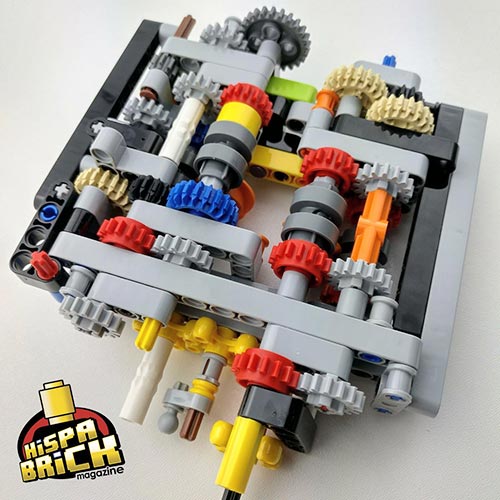
Bugatti gear Box
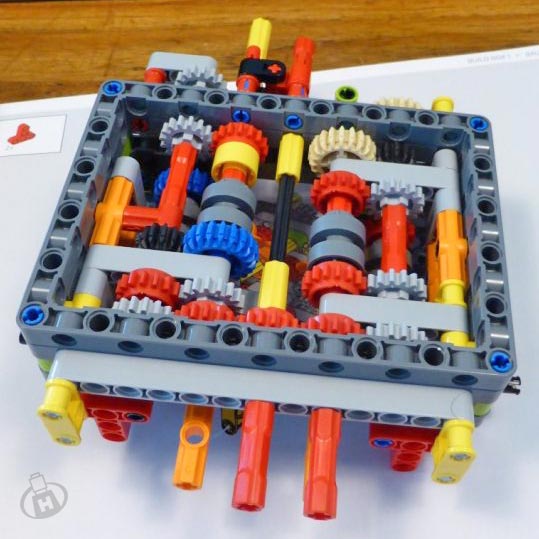
Lamborghini Gear Box
…although the frames make it sturdier and allow the entire module to serve as a structural element of the chassis.
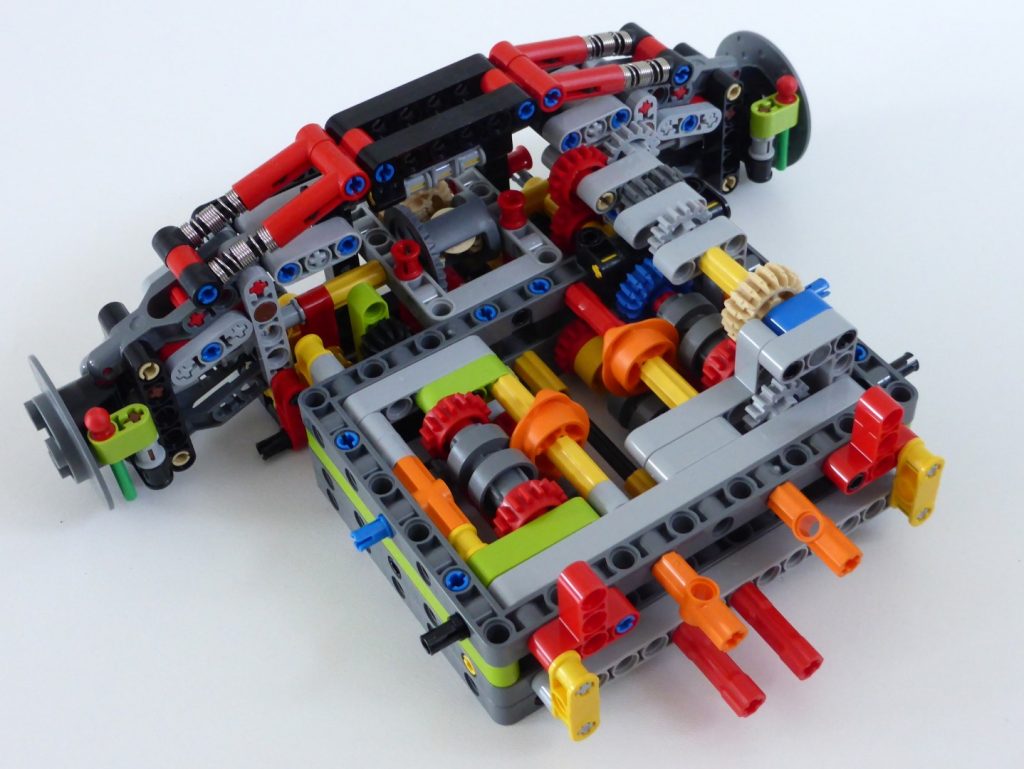
A bottom view of the model shows how the gearbox is still visible after adding it to the model:
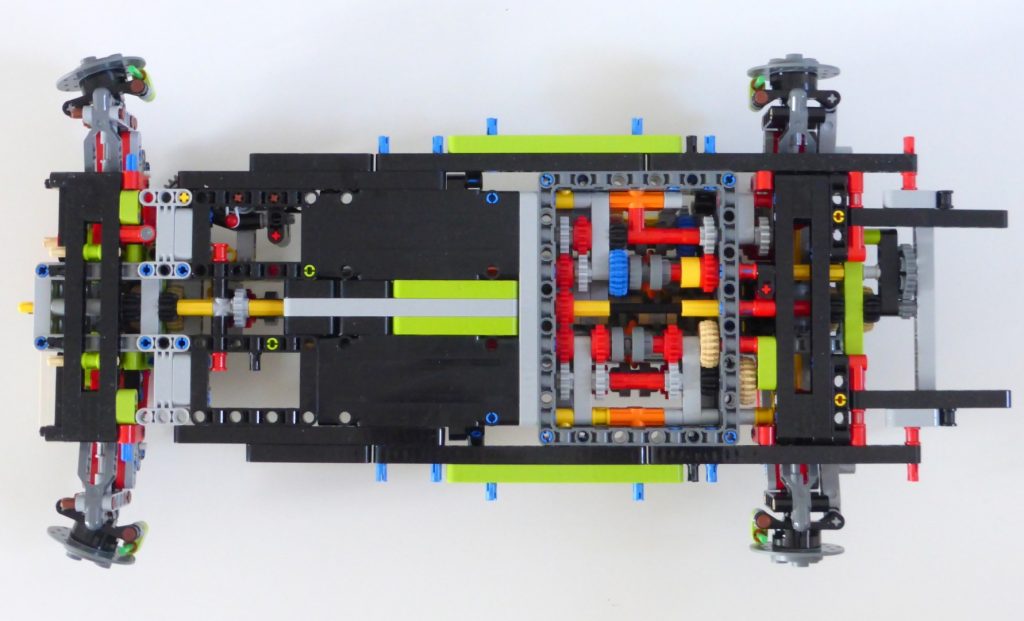
Whereas the Bugatti consisted of a front and a rear section that were combined in a process called the “marriage”, the Laborgini Sián is built from rear to front in a continuous process.

Another striking difference is the engine. Each supercar has its own style, and the real-life Bugatti Chiron does have a V16 engine, but the standard LEGO engine block element is quite large and the Bugatti engine was rather… oversized. The Lamborghini Sián engine is much more compact (V10) and has a lot of nice detailing. Only 2 of the pistons are actually visible after adding these details, but that is enough to see the engine in action. There are no stickers in this set and all the detailing on the engine is printed!
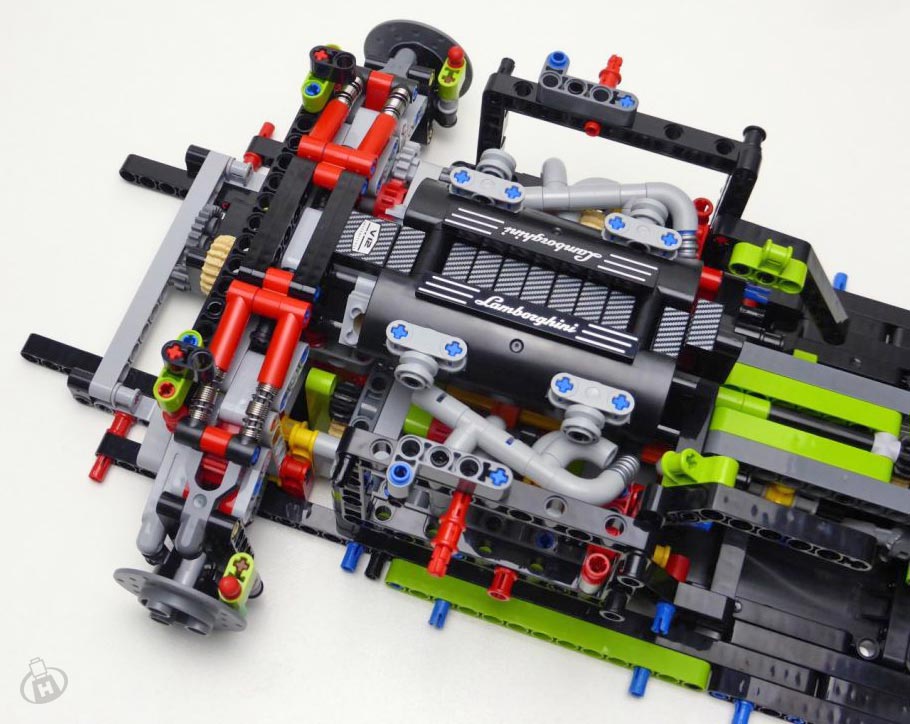
Time to move forward to the gear shifting mechanism (pedals) which appears to work even smoother than the one in the Bugatti, but is essentially the same. The paddles would have benefitted from having an axle with stop as they come off quite easily and are not always easy to put back in place.
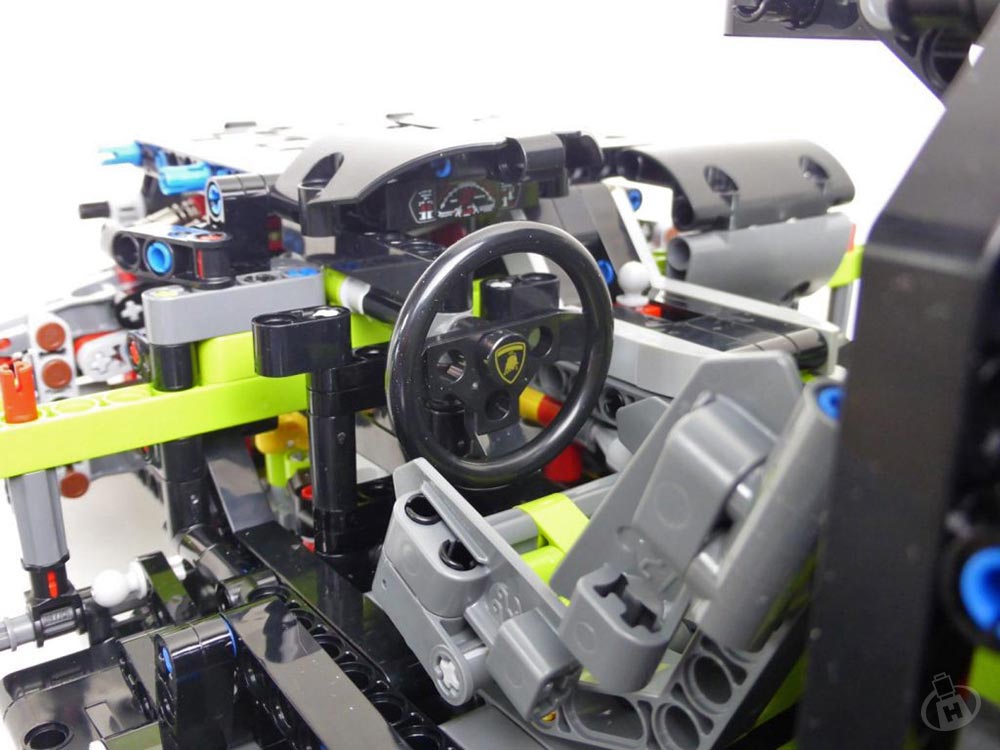
An outstanding feature of this model are the scissor doors. You can see the mechanism for these doors right next to the seat in this image. Getting out of the seat and over the mechanism looks like quite a feat :D
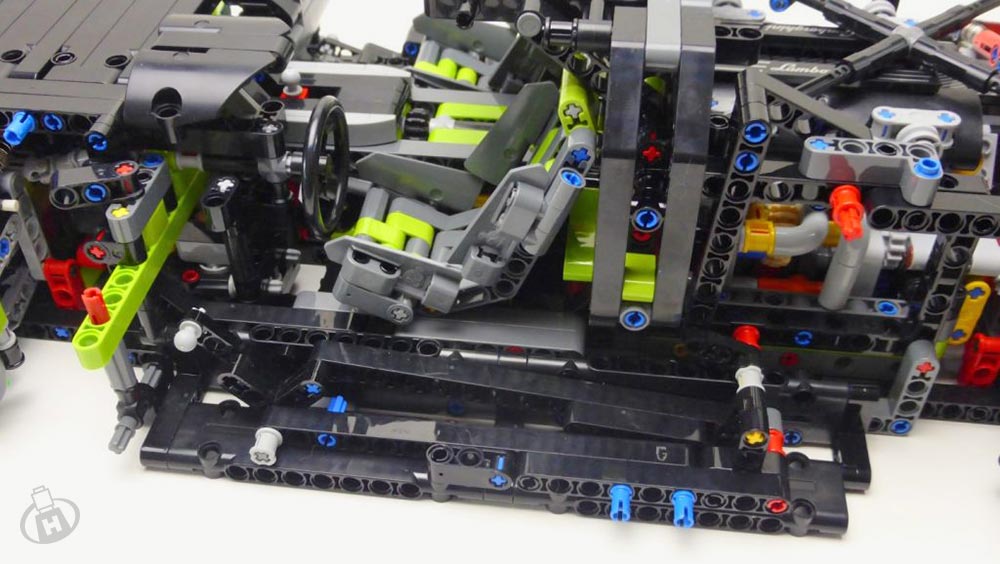
The real strength of this model lies in its outer shape. LEGO has done a fine job recreating the curves of the original model which has quite a few odd angles. I especially like the way the rear lights and exhausts are represented.
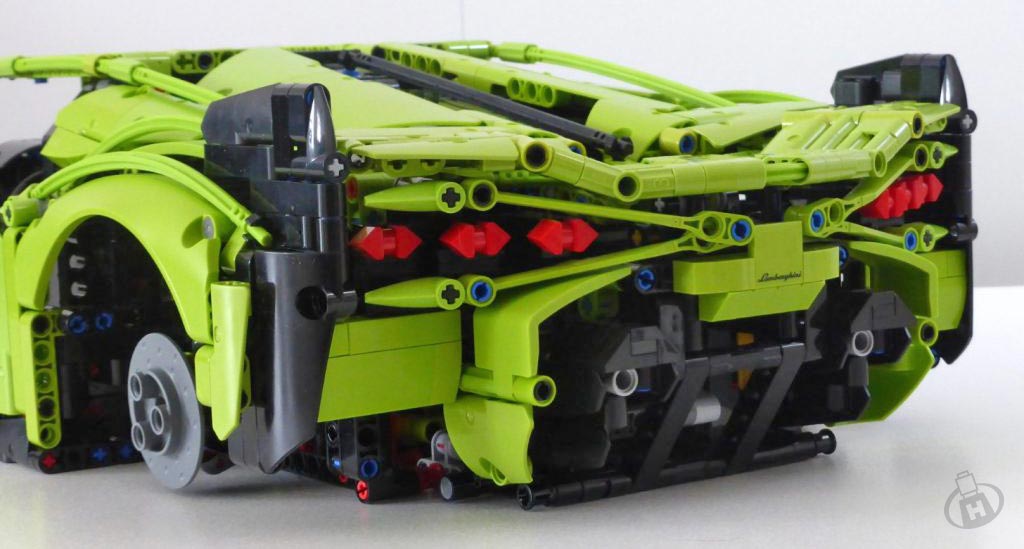
It also shows a little of the other cool feature in this car: the spoiler.
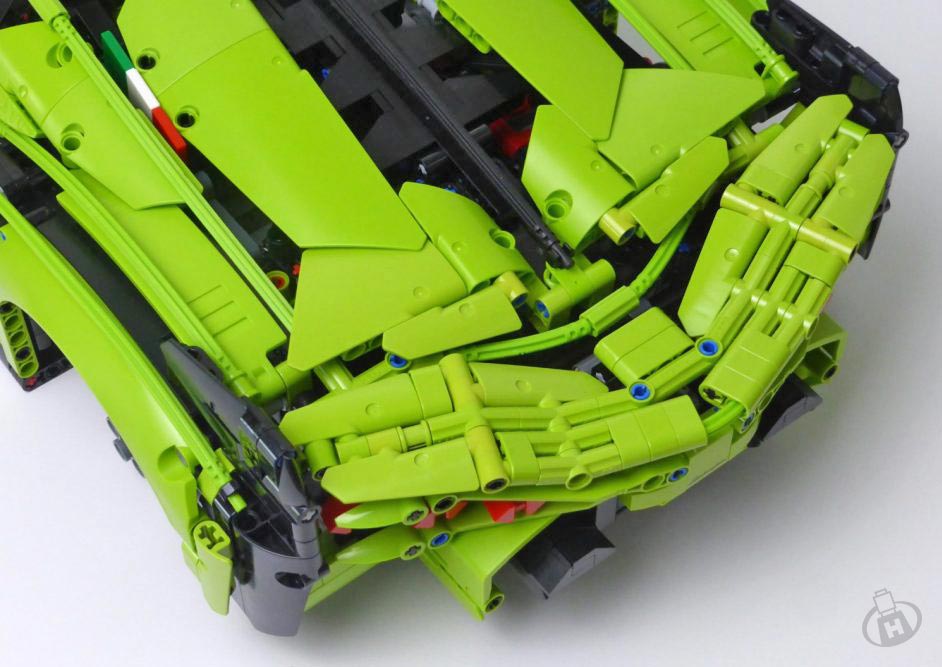
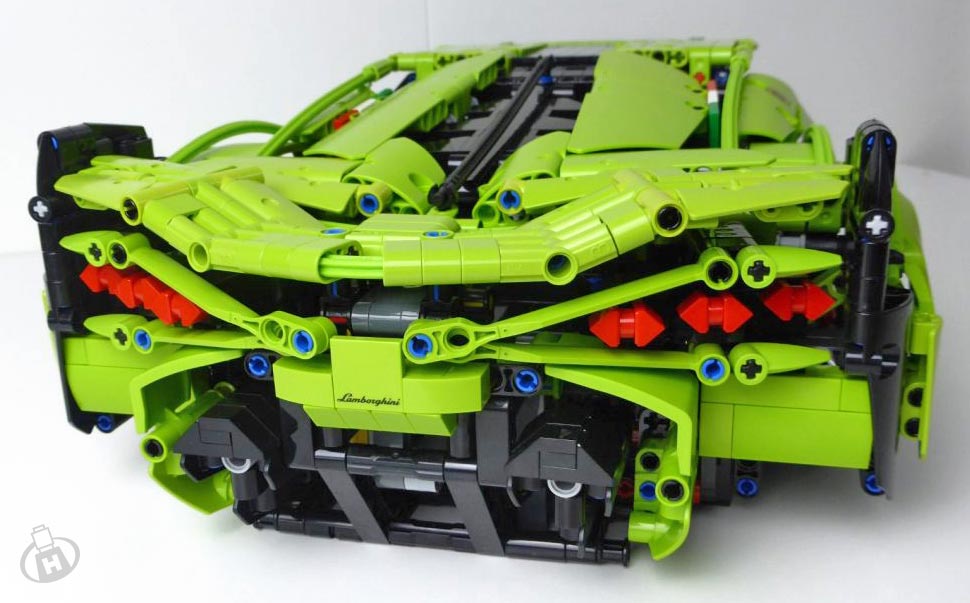
This is where one of the most commented "issues" of this set comes to light: the colour difference between different Lime Green elements. WHile I have seen images of identical elements in very different shades of Lime Green, I must say in all honesty that in my case those differences are very minor. The only real difference that stands out is related to a single part: 6308234: Beam 1M W/Cross Axle. The plastic in this part appears to be different, which may account in part for the (consistent) colour difference (closer to olive green) between this part and the rest of the Lime Green elements in this set. It is certainly something I hope LEGO will address in depth, as it stands out on such a special set. However, aside from that 1 element (which appears 10 times in the set) th Lime Green in the body work makes for a nice change.
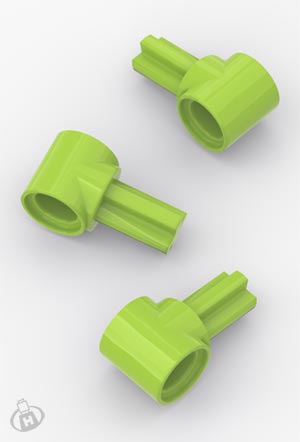
Other cool details are related to the different printed parts. The lid on the fuel tank, the logo on the headrests (repeated on the hood), the decoration on the engine, to name the most significant ones.
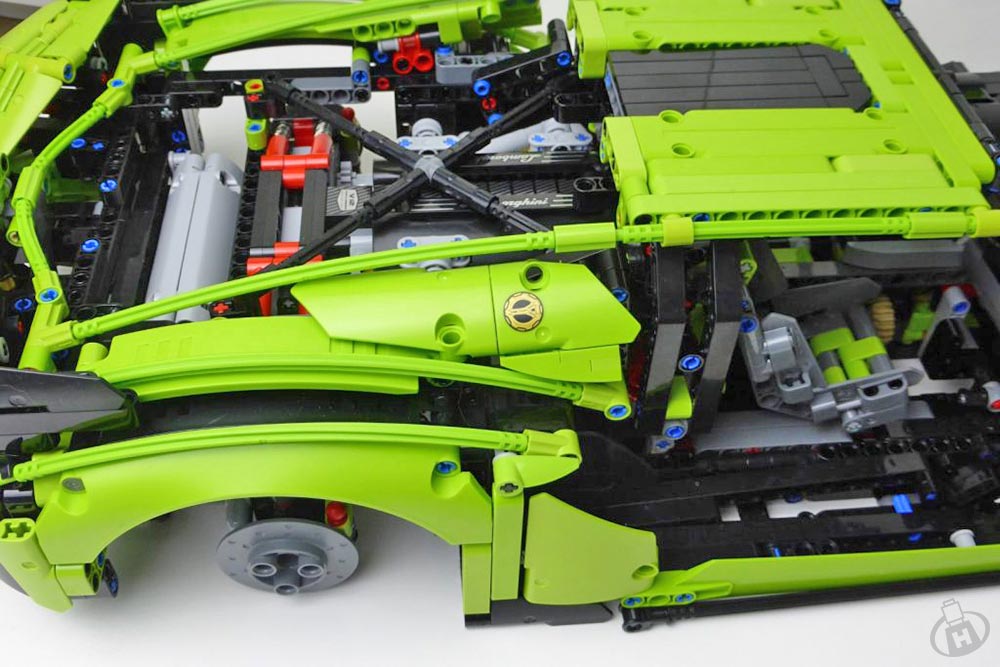
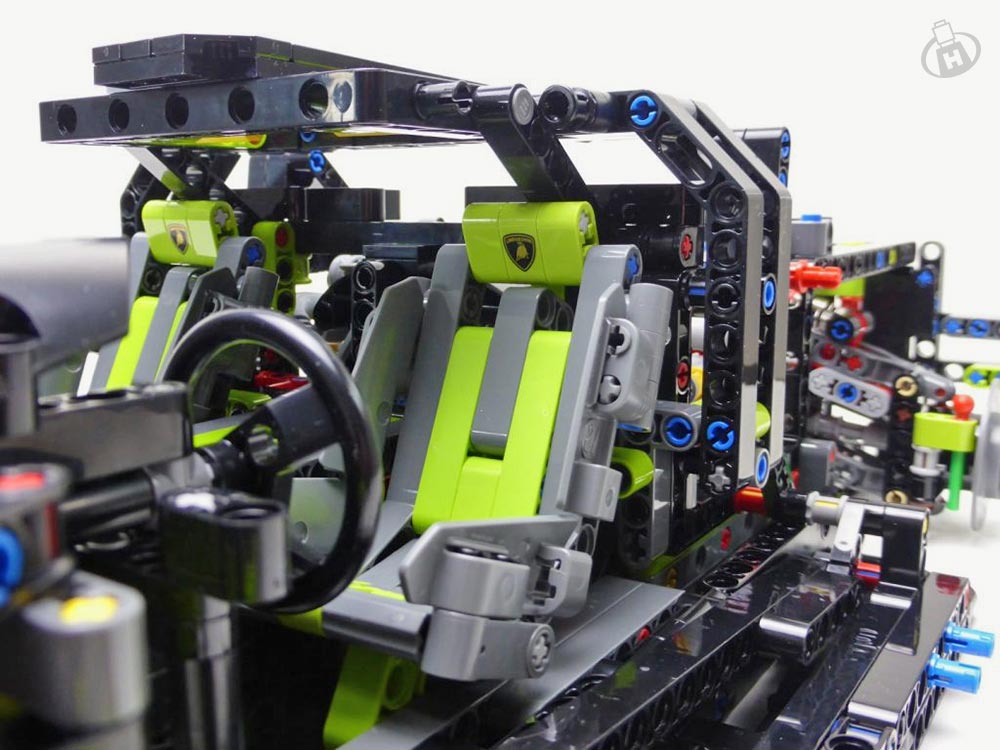
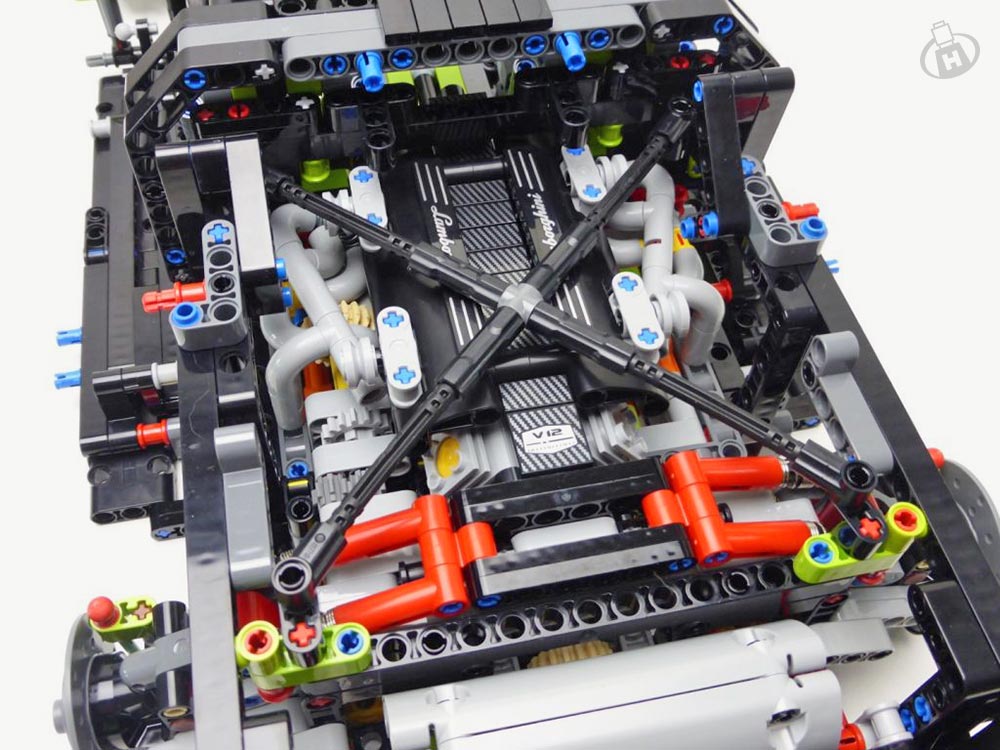
Just like the windows on the gearbox, LEGO has also added a "window" on the engine. The cover of the engine can be removed to show what's underneath. This cover incorporates the Italian flag, as in the real life car.
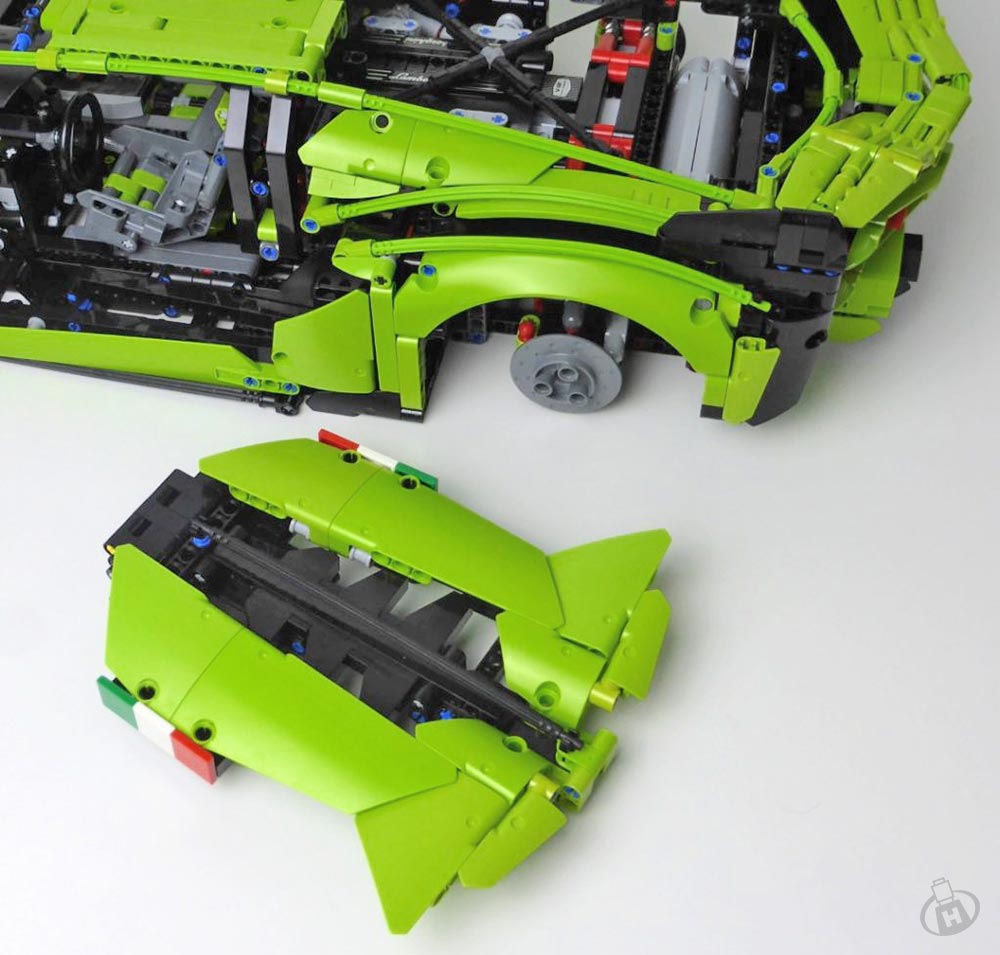
So what do you do with a car like this? Put it in your garage to show off when your friends visit, or take it for a spin? I chose option 2. In the process I found that since the model doesn't have a HOG, steering is quite difficult. However, the model looks stunning and the wheel hubs are absolutely beautiful:
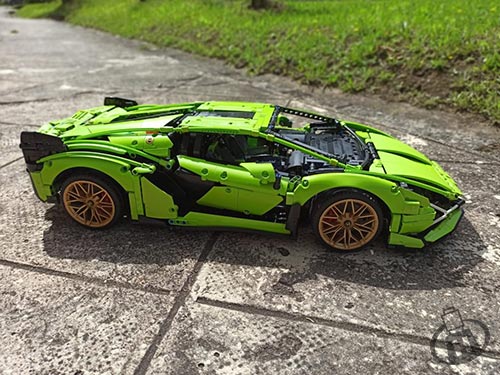
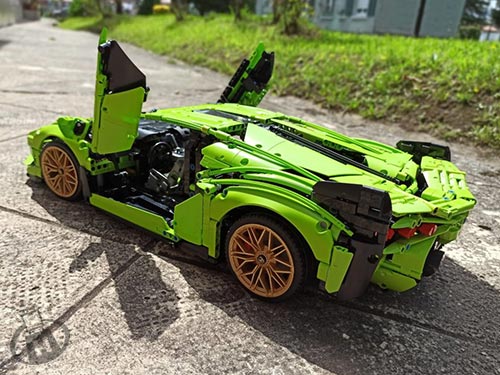
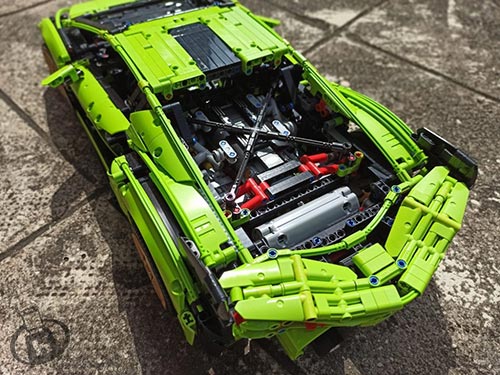

I would like to thank LEGO for providing this set for review. The opinions in this review are not supported or endorsed by LEGO.
23372